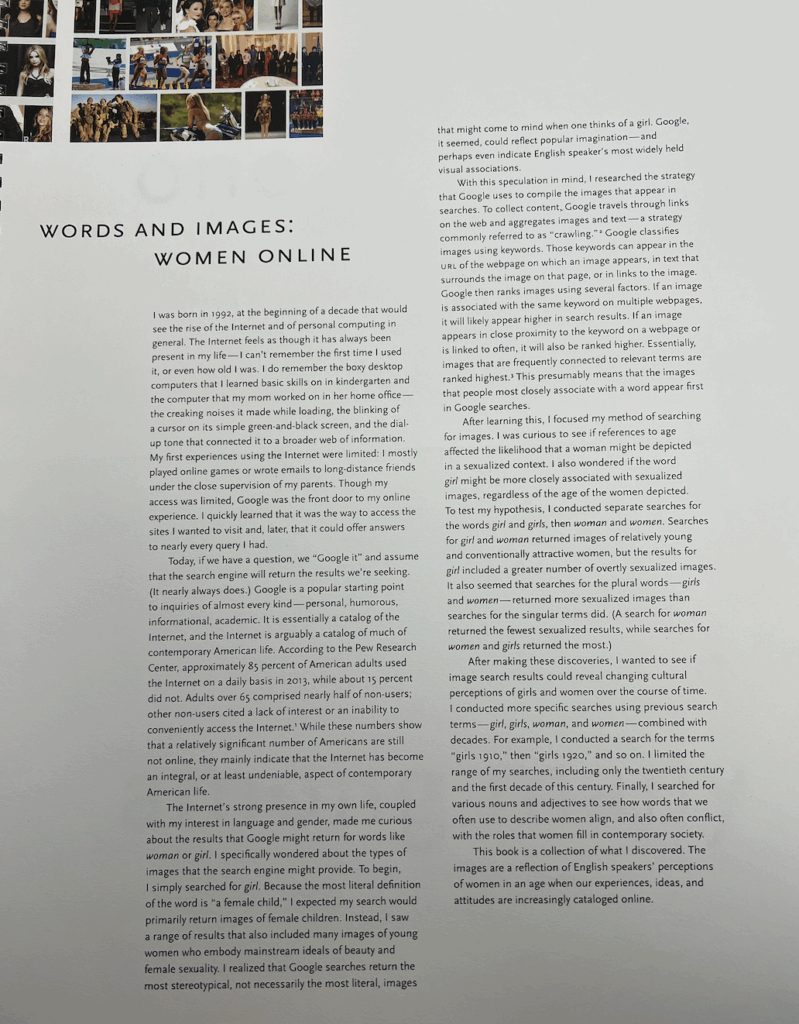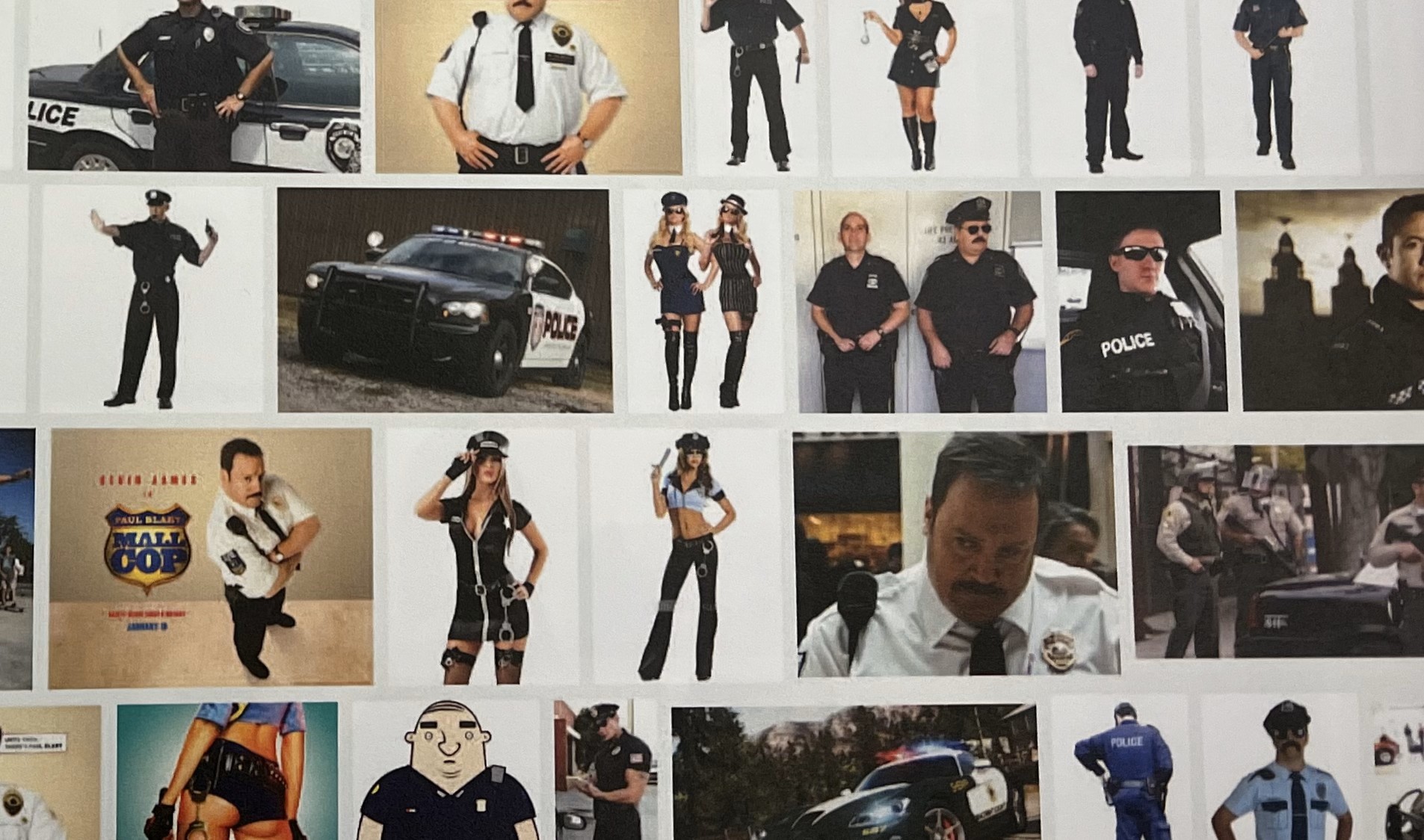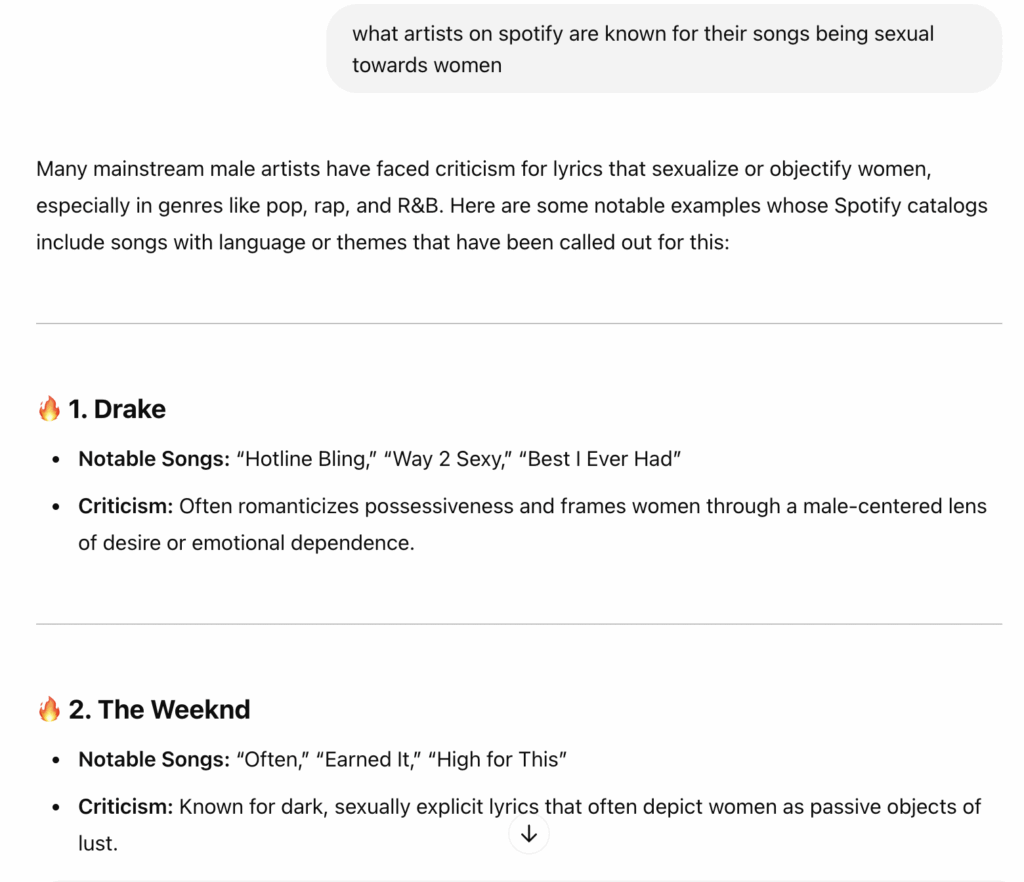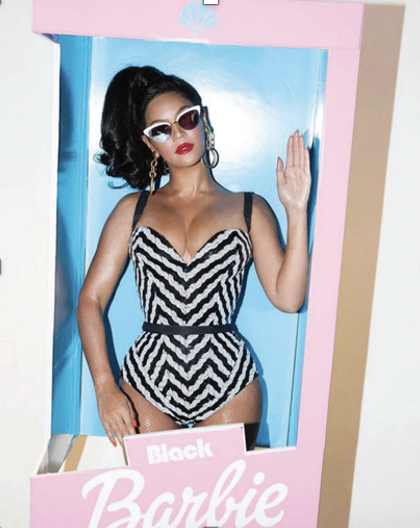By Tess Murphy, Marketing ’25, for JOUR 4130 Gender, Race, and Class in Journalism and Mass Media with Victoria Lapoe, Spring 2025
During the spring 2025 semester, the staff of the Mahn Center for Archives and Special Collections worked intensively with Victoria La Poe’s JOUR 4130 class, Gender, Race, and Class in Journalism and Mass Media. The students explored, selected, and researched materials from the collections, then worked in small groups to prepare presentations. The students had the option to then expand their research into a blog post like this one for their final project.
As a young woman, I found Paula Welling’s Words and Images: Women Online fascinating. Whether we experience gender biases firsthand or witness it in our surroundings, this work raises a huge question: are we ready to understand how and why we still come face to face with these biases every day?

In Words and Images, Paula Welling examines the ways in which language reinforces gender stereotypes through imagery. Through using a simple Google search, Welling utilizes terminology such as “hot,” “CEO,” “cop,” and “hysterical” to reveal the ongoing biases against women.

As I initially began my research on this artifact several weeks ago, I focused on themes of objectification, stereotypes, under/misrepresentation of women, empowerment, mass-mediated images, etc. After diving into specific images of men vs. women and the connotation behind them, I decided to expand with a focus on language used within the music industry. As the influence of media platforms continues to grow, I believe it’s important to reflect on how pop culture and music can perpetuate gender bias through the selective and often stereotypical language used to depict women.
When exploring Welling’s work, I investigated the Male Gaze Theory and John Berger’s Ways of Seeing. These both put an emphasis on how women are viewed from the eyes of a man as objects of male desire, as well as the inability for women to measure up to these stereotypes that mass mediated images promote. Think about the music we listen to now and what’s put on the radio and popular social platforms like TikTok. Maybe we don’t even think about the lyrics. Either way, the language used by some artists, male or female, can be provocative, especially towards women. So, does music fall in line with the ideas that the male gaze theory promotes?
Desensitization and the Social Learning Theory
I wanted to begin by covering desensitization and the social learning theory (Ohio University login required for both). I looked into AI to define each of these concepts. Both concepts involve the idea that when audiences repeatedly see or consume music and media that showcases hypersexualized/stereotypes portrayals, they will be more likely to tolerate these behaviors (chatGPT). I believe these ideas can explain why some people overlook gender biases, especially within the music industry. Some of the most popular artists on music platforms are well-known for the sexually explicit language they use in their music.
Normalization of Language in Rap and Pop Genres
I discovered an article that discusses audience reactions to the language used in popular music videos, with a focus on rap and pop genres. Sexualization and Emotional Valence in Audience Reactions to Popular Music Video Through Automated Language Analysis by Herald Cela explores the connections between the language used in songs and music videos to continue negative stereotypes regarding race and gender. “…what may have been perceived as provocative in the past may now be viewed as normal, reflecting evolving standards for what is considered sexually explicit in music,” (Cela & Wood p. 182). As pop culture and media becomes increasingly more prevalent, how do we overcome the normalization of provocative language?
With this being said, I would like to turn the focus to popular male artists who are known for creating music that may promote the sexual objectification of women. To do this, I simply asked chatGPT to name Spotify artists that fall into this category. A few include Drake, The Weekend, Chris Brown, and Tyga.

Specifically, Drake and The Weekend’s music contains language that frames women as objects or a use for male desires. Certain lyrics bring me back to Gigi Durham’s Lolita Effect which discusses how young girls are sexualized in the media. Some male artists have been criticized for using suggestive language towards women who were not of age. Language like this helps reinforce sexualization towards an “innocent” audience.
You may think to yourself “it’s just music, it doesn’t have any effect on my attitudes or behaviors”. The Weekend has over 118 million monthly listeners on Spotify. Some of us may listen to this kind of music daily, so how do we know it’s not influencing negative stereotypes surrounding women? The Sexualization of Popular Music displays several statistics regarding the music industry and provocative content. “The following themes are common in American music lyrics: men and power (20%), sex as a top priority for men (18.3%), objectification of women (18.3%), sexual violence (16.7%), women defined by having a man (10.8%), and women not valuing themselves (5.5%),” (Bretthauer, Zimmerman, & Banning, 2007). It is mentioned that these messages have a negative effect on listeners interactions and views surrounding women. Similarly, Welling’s work in Words and Images introduces themes of objectification and misrepresentation, revealing the continuing demeaning stereotypes towards women. These portrayals are present in music as through online search engines, helping shape our views and attitudes in a negative way.
Priming in Music Videos
Music can emotionally prime us by providing new rhythms and beats. Depending on the tones, themes, or ideas presented through music and lyrics, our attitudes or beliefs can be primed. Do you ever hear a song that brings you back to a certain moment in your life, or you’re reminded of a person or place? Music can create associations that influence our thoughts, beliefs, and attitudes. We can be primed without even knowing.
A study presented by Jennifer Aubrey helps uncover the priming influence of self-sexualization on thoughts regarding gender, race, and power. It states, “those viewing the sexually objectifying music videos reported more agreement with adversarial sexual beliefs, more tolerant attitudes about sexual harassment, and more acceptance of interpersonal violence in romantic and sexual scenarios. The authors argued that because the music videos primed the belief that women use their sexuality to their advantage, the related thoughts were that women have little basis to complain if men reciprocate the interest (even in terms of violence or sexual harassment),” (Aubrey, Gamble & Hahn, 2016). This study works to demonstrate how exposure to content where women are shown in a sexual manner helps continue damaging stereotypes.
Race and Music
Lastly, I wanted to touch on the influence music has on race. As a starting point, I first asked AI to discuss the connection between race and the rap/hip-hop genre of music. It briefly discussed how this specific genre of music helped amplify the voices of African Americans. Still, there are artists that work to express empowerment and resilience for Black women struggling to live in a racist and sexist society.
“The Bad Bitch Barbie Craze and Beyoncé” by Crystal LaVoulle & Tisha Lewis Ellison uses Beyoncé’s album Lemonade to put an emphasis on the Black body ideal. “Bad Bitch Barbie” is a term used to identify a woman who embraces her body while simultaneously using it as a commodity. This term represents the objectification of the Black female body while also pushing the ideas of feminism and confidence. “Black girls’ and women’s bombardment with media images that depict their bodies negatively, yet describe other women’s bodies in more positive terms, demonstrates the ways racism is used to render the Black female voice powerless through the degradation of her body,” (LaVoulle & Ellison p. 75). In Beyonce’s album Lemonade, she rejects the normal white beauty norms and displays her confidence to use her desirability to her own advantage in the music industry.

This brings me to the feminist standpoint theory, which broadly states how knowledge is socially situated, and marginalized groups have a more distinct perspective of social reality due to personalized experiences. Through this view, we are able to see how or why society may misrepresent these groups.
Moving Forward
After looking at Paula Welling’s Words and Images and then completing thorough research, I have come to understand that biases regarding gender and race are still very prominent in today’s world. It’s important to understand the crucial role that media, viral content, and language play in influencing our perspectives, especially our perspectives of women. Inspired by Words and Images to focus on the music industry and the language used by popular artists, we can see how women are framed by society and the media. Unconscious biases are and may always be prevalent, so becoming aware of the content we’re continuously surrounding ourselves with may allow us to take a step towards change. Possible further research may include: the comparison of lyrical content from male vs. female artists or how do social platforms reinforce repetitive exposure to demeaning language? Is it just music or are we okay with normalizing these damaging stereotypes?
References
Aubrey, J. S., Gamble, H., & Hahn, R. (2016). Empowered Sexual Objects? The Priming Influence of Self-Sexualization on Thoughts and Beliefs Related to Gender, Sex, and Power. Western Journal of Communication, 81(3), 362–384.
Berger, J. (1972). Ways of Seeing. https://monoskop.org/images/9/9e/Berger_John_Ways_of_Seeing.pdf
Bowell, T. (n.d.). Feminist Standpoint Theory. Internet Encyclopedia of Philosophy. https://iep.utm.edu/fem-stan/
Bretthauer, B., Zimmerman, T., & Banning, J. H. (2007). A feminist analysis of popular music: Power over, objectification of, and violence against women. Journal of Feminist Family Therapy: An International Forum, 18(4), 29-51. doi:10.1300/J086v18n04_02
Cela, H., & Wood, G. (2024). Sexualization and Emotional Valence in Audience Reactions to Popular Music Video Through Automated Language Analysis. American Psychological Association. https://psycnet-apa-org.proxy.library.ohio.edu/fulltext/2025-05329-005.pdf
ChatGPT, chatgpt.com/. Accessed 10 April 2025.
Durham, M. G. (2009). The Lolita Effect: The Media Sexualization of Young Girls and What We Can Do About It. Communication, Culture & Critique.
Fanti, K. A., Vanman, E., Henrich, C. C., & Avraamides, M. N. (n.d.). Desensitization to Media Violence Over a Short Period of Time. Ohio University Libraries: Library Resource Access (login).
Hu, C., & Huang, J. (2023). An Exploration of Motivations for Online Identity Reconstruction from the Perspective of Social Learning Theory. Ohio University Libraries: Library Resource Access (login).
LaVoulle, C., & Ellison, T. L. (2017, September 1). The Bad Bitch Barbie Craze and Beyoncé. Ohio University Libraries: Library Resource Access (login).
Mulvey, L, (2025, February 3). The Male Gaze. Media Studies. https://media-studies.com/male-gaze/
Szymanski, D. M., Moffitt, L. B., & Carr, E. R. (2011). Sexual Objectification of Women: Advances to Theory and Research. Major Section on sexual Objectification of Women. https://www.apa.org/education-career/ce/sexual-objectification.pdf
Wright, C. L., Carpentier, F. D., Ey, L.-A., Hall, C., Hopper, K. M., & Warburton, W. (n.d.). Sexualization of Popular Music. https://files.eric.ed.gov/fulltext/ED590326.pdf
Yu Ling Tay, R., & Chin NG, B. (2019, April 16). Effects of affective priming through music on the use of emotion words. Ohio University Libraries: Library Resource Access (login).